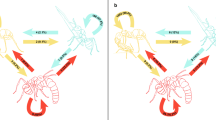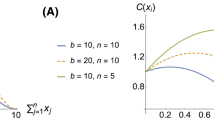Summary:
Task partitioning is the name given to the phenomenon in which a piece of work is divided among two or more workers, such as the partitioning of the collection of a load of forage between a forager and a storer or transporter. This study 1) reviews empirical data concerning the occurrence of task partitioning in insect societies with the general aim of drawing broad conclusions about its prevalence and diversity, and 2) considers the potential costs and benefits of task partitioning. The data show that task partitioning occurs in many species, with examples in ants, bees, wasps, and termites. The general impression is that it is an important and widespread feature of work organisation in insect societies. Nearly all examples concern foraging. There is much variation on the main theme. For example, in the number of intersecting cycles (2, 3 linear, 3 all interlocking), where transfer occurs (at the nest, at the forage site, on the trail back to the nest), whether transfer is direct or indirect (liquids such as nectar, water, and honeydew are always transferred directly whereas solids are transferred both directly and indirectly). Task partitioning is always subject to time costs. Benefits occur either through enhancement of individual performance (e.g., where task partitioning permits greater division of labour thereby utilising consistent differences in worker abilities caused by morphology or experience) or through enhancement of the overall system (e.g., where partitioning itself eliminates a constraint affecting task performance, such as when a forager can collect sufficient material for several builders). By causing a series organisation of work, task partitioning reduces system reliability but this effect may be minimal in all but very small colonies.
Similar content being viewed by others
Author information
Authors and Affiliations
Additional information
Received 22 June 1998; revised 14 October 1998; accepted 20 October 1998.
Rights and permissions
About this article
Cite this article
Ratnieks, F., Anderson, C. Task partitioning in insect societies. Insectes soc. 46, 95–108 (1999). https://doi.org/10.1007/s000400050119
Issue Date:
DOI: https://doi.org/10.1007/s000400050119




